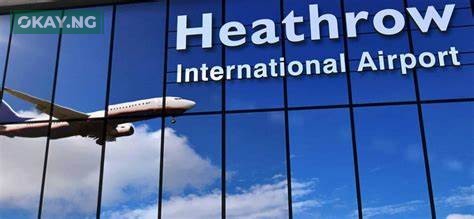After a dramatic shutdown triggered by a significant substation fire, Heathrow Airport has commenced the arduous process of resuming operations, a move aimed at alleviating the widespread travel chaos that ensnared thousands of passengers. The incident, which paralyzed Europe’s busiest airport, has ignited a fervent debate regarding the resilience of critical infrastructure and the financial repercussions borne by airlines and travelers alike.
“Our teams have worked tirelessly since the incident to ensure a speedy recovery,” Heathrow officials stated via X, emphasizing their commitment to prioritizing the “repatriation and relocation of aircraft.” This statement, while reassuring, does little to diminish the frustration and anxiety experienced by those stranded and inconvenienced. As a news writer, I understand the inherent human element in such disruptions; the missed connections, the delayed reunions, and the sheer uncertainty that accompanies travel disruptions.
The scale of the disruption has prompted sharp criticism from airline executives, who question the robustness of Heathrow’s backup systems. “You would think they would have significant back-up power,” a high-ranking European airline executive told Reuters, highlighting the industry’s astonishment at the failure of such a vital facility. This sentiment reflects a broader concern about the vulnerability of critical infrastructure in an increasingly interconnected world.
Read Also: Lagos State Partners with Summa Group for Lekki-Epe International Airport Development
The financial implications of this incident are substantial, with projections indicating potential losses in the tens of millions of pounds. Airlines are now grappling with the logistical nightmare of rescheduling flights and accommodating stranded passengers, while also facing the prospect of significant compensation claims. This situation forces us to consider the economic ripple effects of such disruptions, impacting not only airlines but also the broader tourism and business sectors.
Police investigations are ongoing, with counter-terrorism officers leading the inquiries due to the critical nature of the infrastructure involved. While no foul play is currently suspected, the need for thorough investigation is paramount. The investigation will also give insight into the need for better infrastructure design and maintenance.
Comparisons have been drawn to the 2010 Icelandic ash cloud, which grounded approximately 100,000 flights across Europe. However, this incident is distinct in its nature, stemming from a localized infrastructure failure rather than a natural disaster. This distinction underscores the importance of robust maintenance and contingency planning for critical facilities.
For passengers, the immediate concern is the restoration of normal flight schedules. Heathrow has indicated its intent to “run a full operation tomorrow,” but the lingering uncertainty adds to the stress experienced by many. As a news writer, I see the human element in every delayed flight, every missed connection, and every anxious wait.
The Heathrow power outage serves as a stark reminder of the delicate balance between technological advancement and infrastructure resilience. It compels us to ask: Are we adequately prepared for unforeseen disruptions? And how can we ensure that critical systems are robust enough to withstand such challenges? As we move forward, the lessons learned from this incident must inform future infrastructure planning and investment.













